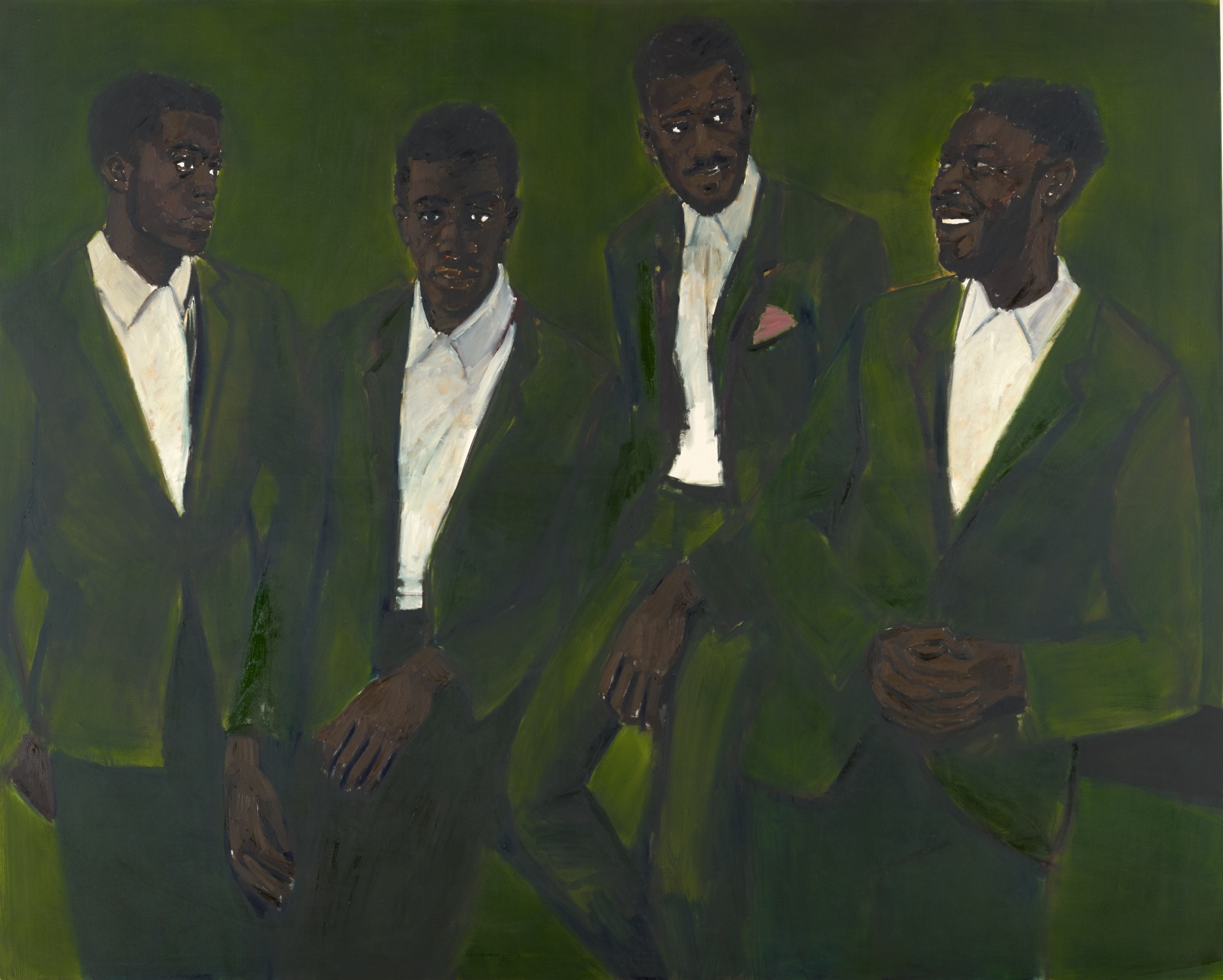Inspired by her – Lynette Yiadom-Boakye
25 May 2020
This contribution from the tour series "Inspired by her" on current female positions in the Kunstmuseum Basel gives us an insight into Lynette Yiadom-Boakye's painting "A Culmination" in the Kunstmuseum Basel | Neubau.
A reception committee of four handsome young men welcomes the visitors at the entrance of our Neubau. They seem relaxed, as if they were casually caught up in a meeting. Who are they, these gentlemen in the elegant suits, and what do they have to do with each other? The scene is fascinating, it seems familiar and strange at the same time. Are they actors, a crew of waiters or members of a jazz band?
The scene is as enigmatic and ambiguous as the associations are varied. The picture was painted by the English-Ghanaian artist Lynette Yiadom-Boakye (*1977). Together with other portraits it was on view at the Kunsthalle Basel in the exhibition "A Passion to a Principle" in 2017. The painter and author, who studied at the Royal Academy of Arts, was the first black woman to be nominated for the prestigious Turner Prize in 2013. Her pictorial theme: people with dark skin color, who appear individually or in small groups in unspectacular scenes, as in "A Culmination" (2016).
But how close to reality is this scene? Shown almost in life-size, sitting or standing close together, the four figures differ only slightly in facial expression, posture and gestures. The interaction in the group appears cautious; only the person on the far right responds to the seriousness of his counterpart with a laugh. More individualized than the others, he stands in the foreground as if he were in the position of a speaker. The second man from the left looks directly at the audience, while his neighbour seems to be lost in himself. The predominant hue, oscillating between emerald and olive green, not only pervades the picture, it also binds the four together as a group, like a community of fate. Light shirts and sparkling white eyes contrast the dark colouring – the pink pochette in the breast pocket becomes an eye-catcher.
A peculiarly muted timbre determines the distant presentation. Although all four characters seem to be highly realistic, they do not really appear to be individuals, but rather as reverberations of themselves or reminiscences of the past. But what echoes here? The narrative elements are sparsely used – neither context, time nor place can be ascertained. Even the cryptic title of the picture, "A Culmination" emphasizes the ambivalence of the scene and opens up further layers of meaning. An interpretation is not forced upon us, rather a process of reflection is set in motion, and questions about the presence and role of coloured people in European art history are raised.
As the artist points out, she is not interested in who is depicted, but rather in what. Lynette Yiadom-Boakye does not paint portraits of real people. She invents her figures, born from her own memories and sketchbooks. They are inhabited by what has long since passed and what is present at the same time. Thus paintings of the 19th century have found its expression in the portraits, Edouard Manet, Edgar Degas and Walter Sickert resonate in the background. In this visual echo chamber, visitors are confronted with their own ideas about black people. The positioning of the painting in the foyer not only raises awareness of changed realities in art and society, it also opens our eyes to shifts in values in the current social fabric – and sends a signal that in the art of a globalized world light skin can no longer be considered the norm.
Written by: Iris Kretzschmar, art historian, art mediator and freelance author

